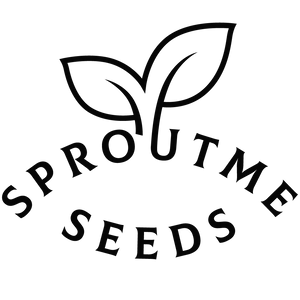Squash Butternut
Butternut squash is a delicious and nutritious winter squash variety that is prized for its sweet, nutty flavor and creamy texture. Growing your own butternut squash allows you to enjoy this versatile vegetable fresh from the garden and store it for later use.
Preparing for Growing:
- Selecting a planting location: Choose a sunny location with well-drained soil for optimal butternut squash growth. Ensure the area receives at least 6-8 hours of sunlight per day.
- Soil preparation: Prepare the soil by loosening it to a depth of at least 12 inches and incorporating plenty of organic matter like compost or aged manure to improve soil fertility and drainage.
- Purchasing or preparing containers/pots: Butternut squash plants require ample space to spread, so it's best to plant them directly in the ground. However, if space is limited, choose large containers with a minimum capacity of 5 gallons.
Starting from Seeds Indoors:
- Seed preparation: Butternut squash seeds do not require any special preparation before planting.
- Choosing suitable pots/containers: Use biodegradable pots or peat pots to start seeds indoors. Ensure the containers are at least 3 inches deep to accommodate the seedlings' root systems.
- Sowing and caring for seeds indoors: Plant seeds 1 inch deep in pots filled with seed starting mix. Keep the soil consistently moist and provide warmth and adequate light for germination, which typically occurs within 7-10 days.
- Transplanting to larger containers if necessary: If seedlings outgrow their pots before the last frost date, transplant them into larger containers to prevent root crowding.
Starting from Seeds Outdoors:
- Soil preparation: Prepare a fine seedbed by removing weeds and debris and amending the soil with compost or aged manure.
- Selecting appropriate timing and method for outdoor sowing: Wait until after the last frost date to sow seeds directly into the garden when soil temperatures are consistently above 60°F.
- Caring for seeds outdoors: Keep the soil evenly moist until seeds germinate, which usually takes 7-10 days.
Growing in Containers/Pots:
- Selecting suitable plants for containers: Choose compact or bush-type butternut squash varieties specifically bred for container growing.
- Container and soil preparation: Use large containers with drainage holes and fill them with a well-draining potting mix enriched with compost.
- Sowing or transplanting plants into containers: Plant seeds or transplant seedlings into containers, ensuring they have enough space to spread.
- Caring for container plants: Water regularly to keep the soil evenly moist, and fertilize every 2-3 weeks with a balanced fertilizer.
Transplanting to Garden:
- Soil and planting site preparation: Prepare the planting site by digging a hole twice as wide and deep as the root ball of the seedling. Amend the soil with compost and ensure proper drainage.
- Correct timing and method for transplanting: Transplant seedlings when they have 2-3 true leaves, spacing them 3-4 feet apart in rows spaced 6-8 feet apart.
- Post-transplant care: Provide support for sprawling vines with trellises or allow them to spread across the ground. Mulch around plants to retain moisture and suppress weeds.
Plant Care:
- Watering: Butternut squash plants require consistent moisture, especially during flowering and fruiting. Water deeply once or twice a week, depending on weather conditions.
- Fertilizing: Apply a balanced fertilizer or compost tea every 3-4 weeks to promote healthy growth and fruit development.
- Weeding: Keep the area around butternut squash plants free of weeds to reduce competition for nutrients and water.
- Pest and disease management: Monitor for pests such as squash bugs and cucumber beetles, and diseases like powdery mildew and vine borers. Use row covers, organic insecticides, or fungicides as needed.
Harvesting:
- Determining when plants are ready for harvest: Butternut squash is ready for harvest when the skin becomes hard and resists puncture with a fingernail, and the vine starts to wither and die back.
- Harvesting and storage guidelines: Use a sharp knife to cut butternut squash from the vine, leaving a few inches of stem attached. Cure harvested squash in a warm, dry place for 1-2 weeks before storing in a cool, dark location for up to 3-6 months.
When to Start from Seeds by USDA Plant Hardiness Zones:
- Butternut squash is a warm-season crop and should be planted outdoors after the danger of frost has passed. Start seeds indoors 3-4 weeks before the last expected frost date for transplanting outdoors.
Fast Facts:
- Planting depth: 1 inch
- Seed spacing: 2-3 feet between hills
- Plant spacing: 3-4 feet apart in rows spaced 6-8 feet apart
- Number of seeds per pot/container: 1 seed per pot
- Water preferences: Evenly moist soil
- Sun preferences: Full sun
- Soil type and other important factors: Well-draining loamy soil with a pH of 6.0-7.0
- Companion Planting: Butternut squash benefits from companion planting with crops like beans, corn, and marigolds, but avoid planting them near members of the cucumber family.
- Temperature Preference: Warm-season crop, prefers temperatures between 70-85°F.
- Days to Germination: 7-10 days
- Days to Harvest: 80-100 days after planting, depending on the variety and growing conditions.







